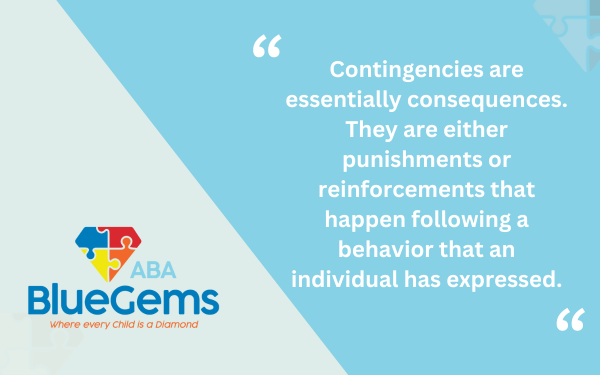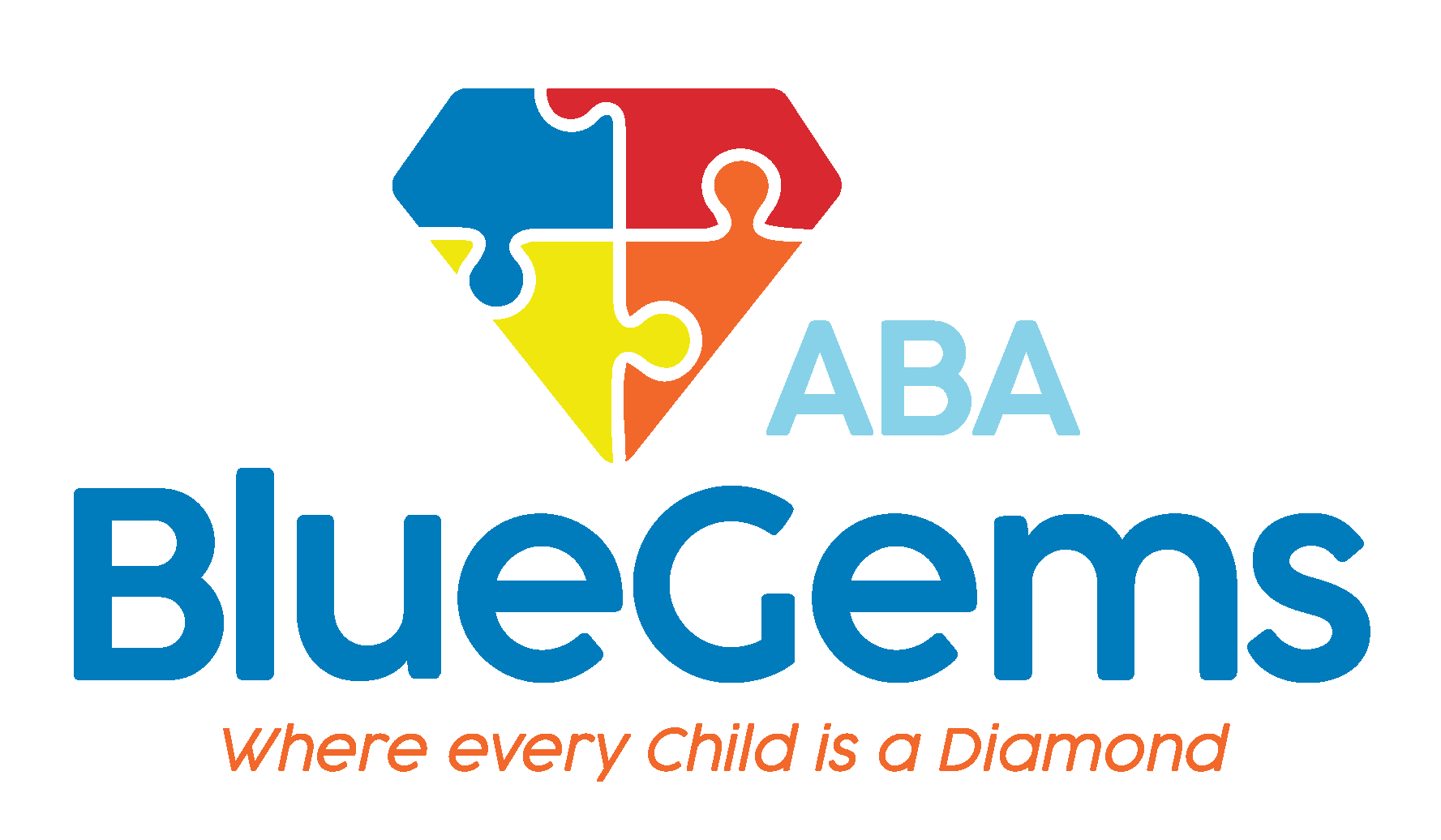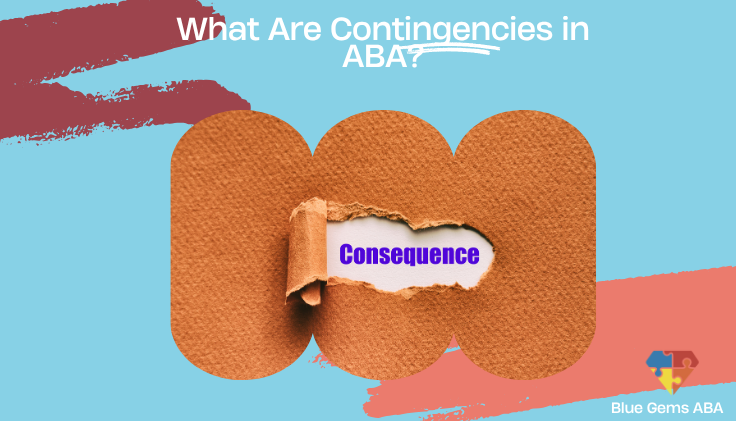What Are Contingencies in ABA?
Children with autism spectrum disorder (ASD) often struggle with communication and social skills, while also experiencing sensory sensitivities, restrictive interests and/or repetitive behaviors. These challenges that they face can be overcome in time with the help of applied behavior analysis (ABA therapy), a science-based approach to learning and behavior.
At the core of ABA therapy is what’s known as the ABC model, which stands for Antecedent, Behavior and Consequence. Simply put, behaviors occur based on what happens before the behavior happens (the antecedent) and what happens after (the consequence).
Using this model as a guide, ABA therapy seeks to help children learn skills and modify behaviors by manipulating both the antecedent and the consequence. At the root of this theory are contingencies, which can occur naturally in the environment or be introduced by humans.
Below, we’ll discuss what contingencies in ABA therapy are and how they are used.
Table Of Contents
What Are Contingencies?
Contingencies are essentially consequences. They are either punishments or reinforcements that happen following a behavior that an individual has expressed.

There are naturally-occurring contingencies, which are known as “natural consequence.”
This could refer to someone hitting the snooze button on their phone, which ends up making them late to leave the house for work, which results in them not having time to eat breakfast, which makes them hungry. The hunger is the “punishment” in this sense of the behavior, which was hitting the snooze button.
Contrived contingencies are what exist in ABA therapy. They are reinforcements that are implemented by a therapist to encourage their patient to acquire new skills or modify a behavior.
ABA therapy doesn’t include punishments for not displaying a desired behavior, opting only for positive reinforcement when the child is successful.
Through in-depth observation and evaluation, ABA therapy teams will come up with contingency plans for every patient that outlines the specific strategies and tools they will use to help each individual child gain skills or modify behaviors.
Again, this is all based on the ABC model.
| Component | Description | Example |
|---|---|---|
| Antecedent | What happens before a behavior | A therapist prompts a child to say “hello” |
| Behavior | The actual action or response | The child says “hello” |
| Consequence | What happens after the behavior | The child receives praise |
| Contingency Plan | Personalized strategy using the ABC model | Plan includes prompts, behaviors to encourage, and rewards |
What Do Contingency Plans Do in ABA Therapy?
Contingency plans in ABA therapy are essentially roadmaps for therapy teams to follow. They are done on an individual basis and are tailored to each child’s unique strengths, challenges and preferences.
By customizing the contingency plans in this way, ABA therapy teams are able to be more successful in affecting real, positive change.
Contingency plans can be thought of as the treatment plan in ABA therapy. They will include details about what strategies will be used to manipulate the antecedent, as well as what reinforcements will be used to reward the child for successfully learning new skills or exhibiting desired behaviors.
The rewards will be based on things that the child likes, which ensures that they remain engaged in the therapy and motivated to learn more. It could be something as simple as extra praise or time with a toy they love.
While therapists are administering the therapy, they will also be collecting data that will be analyzed later to see if the strategy in the contingency plan is working or whether it needs to be adjusted.
This is a key aspect of ABA therapy, as it provides an objective look at the child’s progress toward their goals, which helps the therapy team understand whether the contingency plan is appropriate or not. Ultimately, the data will inform the team whether any tweaks need to be made — either to the child’s goals or two certain aspects of the contingency plan such as how the child is rewarded or what strategies are used to manipulate certain aspects of the ABC model.
When changes or tweaks are made, the therapist will again follow the ABC model to implement them, collect more data and then analyze that data to see whether the new version is more effective and, as a result, more appropriate.
Blue Gems ABA Personalizes All Contingency Plans
Contingency plans in ABA therapy are what guide the therapy team on how to approach each patient, by manipulating the antecedents to hopefully get the child to exhibit certain behaviors and then reward them based on those successful attempts.
At Blue Gems ABA, we personalize all contingency plans to the unique strengths, challenges and preferences of every child we serve. This helps us best support every patient in a way that allows them to grow.
To learn more, please contact us today.




